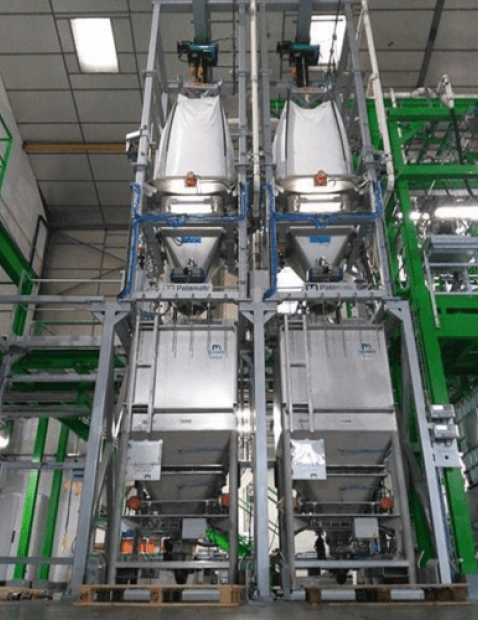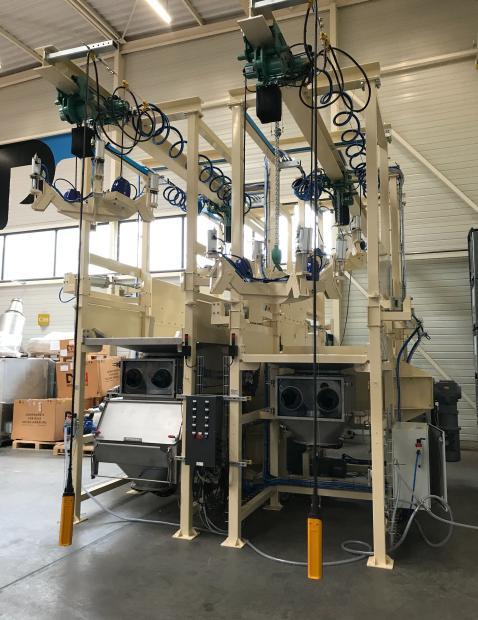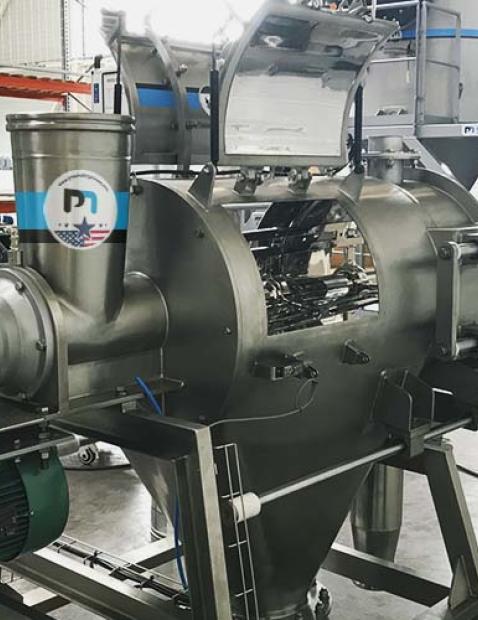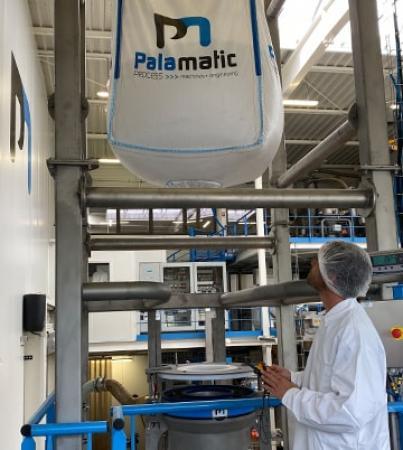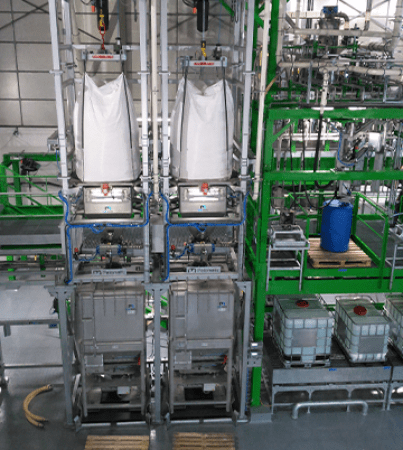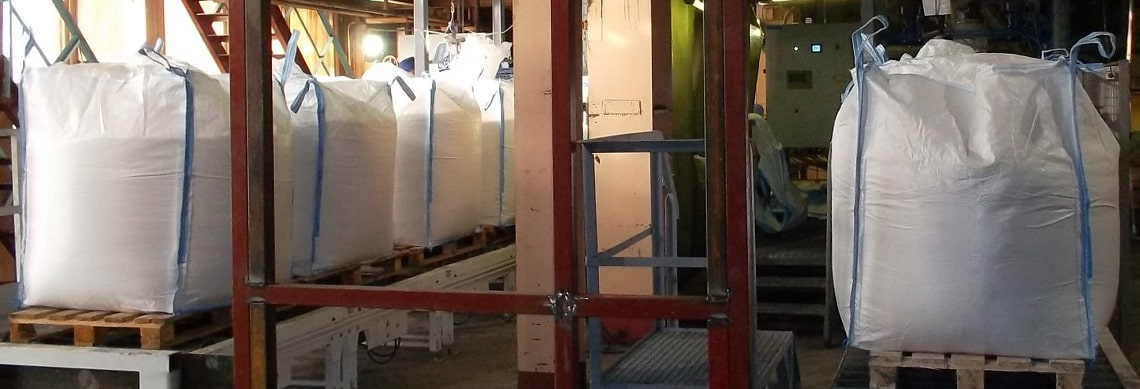
1. The importance of choosing a suitable bulk bag
There are several types of bulk bags or IBCs for handling different kinds powders and dry materials. Depending on your industry regulations, process requirements and the specifics of your powder, the choice of bulk bag can vary.
- The standard bulk bag or "U-shaped bulk bag" is fitted with 4 lifting straps. Made of polypropylene canvas, it is the most popular model in France and Europe. Allowing a wide range of options, this type of bulk bag is very adaptable (with or without internal liner, filling spout, closing skirt, seams, etc.). The loading capacity of this type of bulk bag is 3,000 kg maximum.
- The cubic bulk bag has 4 lifting straps. Due to the two reinforced seams on each side, the bulk bag keeps its rectangular shape even after filling. The loading capacity of this type of bulk bag is 2,000 kg maximum.
- The circular bulk bag has no side seams but has loops sewn to the body of the main fabric. With 1 lifting strap, it is very often used for fine powders. Its unique handle allows easier handling with a forklift and saves time and effort. The loading capacity of this type of bulk bag is 1,500 kg maximum.
- Bulk bags with 1 or 2 lifting points is of the U + 2 panel type. Made of woven polypropylene, it is equipped with two tunnel-shaped straps to help operators with loading onto forklifts. It also eliminates palletizing operations and saves handling time. It can support up to 2,000 kg and is suitable for products such as cereals, fertilizers, cements, etc.
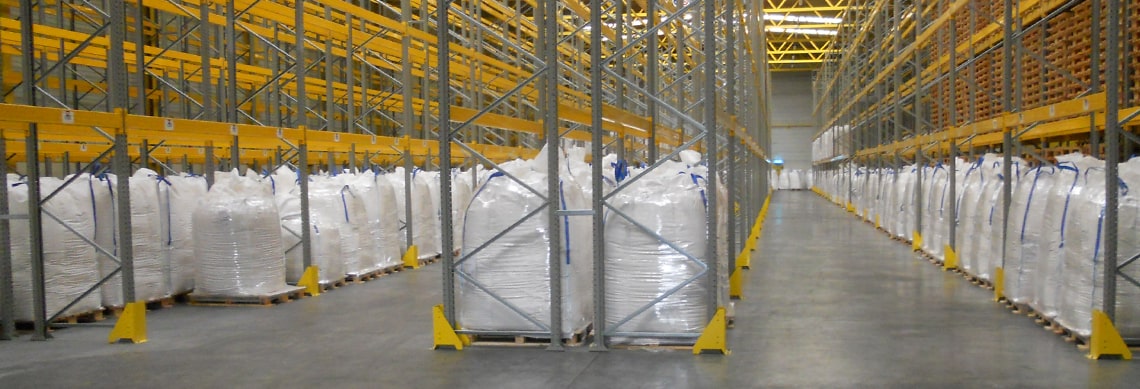
It is important to note that loading of the bulk bag or unloading the bulk bag can create a static charge. In an explosive atmosphere (ATEX), this charge can cause an explosion. In this situation, it is essential to use anti-static / conductive bulk bags.
To avoid the build-up of static electricity, several bulk bags are available: type A bulk bag, type B bulk bag, type C bulk bag or type D bulk bag. To find out more about the specifics of these types of bulk bags, see our white paper dedicated to the storage and transport of your powders by bulk bags.

If your require further assistance,
I am at your entire disposal.
Tarik, powder expert
2. The different bulk bag opening systems
The selection of your bulk bag will also go through the bulk bag opening system you want, depending on the type of loading and unloading used.
For the packaging of your bulk bags:
- The full opening is suitable for products which are not hygroscopic, and do not require special protection. With this type of packaging, the bulk bag will be unusable after opening.
- The skirt protects the product from bad weather. When filling, the opening of the bulk bag is complete.
- The filling chute is used at the hopper outlet, which prevents the emission of dust when filling the bulk bag. The chute requires bulk bag handling equipment.
For emptying your bulk bags:
- The full opening facilitates the unloading of the bulk bag. This system is often used in the construction industry.
- The unloading chute makes it possible to regulate the emptying of the bulk bag and to pour the powder into a defined area.
- The flat bottom makes it possible to store materials for the construction industry.
3. Mandatory information for your bulk bags according to your material
It is important to specify that each bulk bag must include certain mandatory information such as:
- 13H* - Woven plastic bulk bag for hazardous materials
- X or Y or Z - approved for substances of packing group III
- Mm / yyyy - month and year of manufacture
- Country that approved the packaging
- Manufacturer's name and number
- The load in kg of test
- The maximum weight in kg
Certain sectors, such as the pharmaceutical or agrifood sectors, are subject to strict governmental hygiene regulations. The use of bulk bags compatible with clean room production is therefore necessary.
In addition, depending on the product handled, the bulk bag can be lined with an internal bag. This helps protect the powder from moisture and light. The internal bag also makes it possible for products with a small grain size not to escape through the bulk bag.
The design of the bulk bags must correspond to the type of powder used. For this there are safety coefficients:
- 5/1: Guaranteed for single use (the most common)
- 6/1: Reusable
- 8/1: Handling at height - Valid for use in accordance with the characteristics of the bag.
Sixteen distribution classes exist for bulk bags depending on the type of powder handled:
Discover one of our customer achievements for bulk bag storage of chocolate balls.














